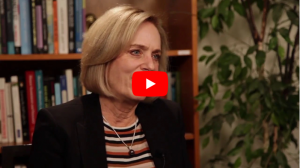Are You the Pursuer or the Distancer in Your Relationship?
 Do you ever find yourself longing for your partner, wishing you could feel more connected, even when you’re both in the same place? Or, have you ever caught yourself fantasizing about taking a break from your relationship, wishing you could just slip away for a while? In most relationships, one partner has more desire for closeness, while the other has more need for distance. If you are part of a couple, here’s an interesting question to ask yourself. Which one are you? Do you want your relationship to be closer? Or, do you feel that your partner is too close for comfort? If it’s you who wants more closeness, how do you go about trying to get it? If you’d prefer some distance, how do you try to create more separation? Finally, and most importantly, are these methods working for you?
Do you ever find yourself longing for your partner, wishing you could feel more connected, even when you’re both in the same place? Or, have you ever caught yourself fantasizing about taking a break from your relationship, wishing you could just slip away for a while? In most relationships, one partner has more desire for closeness, while the other has more need for distance. If you are part of a couple, here’s an interesting question to ask yourself. Which one are you? Do you want your relationship to be closer? Or, do you feel that your partner is too close for comfort? If it’s you who wants more closeness, how do you go about trying to get it? If you’d prefer some distance, how do you try to create more separation? Finally, and most importantly, are these methods working for you?
Most couples experience a kind of push and pull that forces a certain degree of space between them. By this, I don’t mean a good kind of space, like a natural level of autonomy or independence, but a barrier that leaves people feeling unsatisfied no matter which side they’re on. In relationships, more often than not, there is one person who wants more emotional closeness than the other. Dr. Les Greenberg, who developed Emotion Focused Therapy, describes this as one person being the “pursuer” and the other the “distancer” in the relationship.
Most of us have been on one side or the other of this dynamic and many of us have experienced both. Often, those of us who are more inclined to feel intruded on and want space have coaching thoughts that tell us to back away: “He is getting too attached. Things are moving too fast.” “She expects too much from you. This is suffocating.” Those of us who are more likely to feel insecure and needy frequently experience an inner voice that encourages us to push harder: “Why doesn’t he want to spend time with you? You should make sure he really cares about you.” “How can you make her like you more? You have to get her to commit to only you.” This seesaw of one person wanting more and the other wanting less can set up a consistent degree of emotional distance between a couple.
The distancer/pursuer dynamic can lead to a lack of equality between a couple. Distancers often have more power in the sense that they may be withholding affection, avoiding intimacy, or controlling how much closeness they’ll allow with their partner. This can leave their partners feeling frustrated, and they may become increasingly desperate, focused, clingy, or driven to get their needs met. Both parties start to engage in behaviors that exacerbate the other’s reactions. The distancer may act rejecting, cold, or uninterested, making the pursuer more desperate. The pursuer may start to seem intrusive, punishing, or insecure, making the distancer more rejecting. These alienating behavior patterns generate a problematic cycle in which neither person can get closer to the other.
The reasons people fall into these patterns have a lot to do with their earliest relationships. The attachment patterns we formed with our primary caretakers very early in our lives come to represent active working models for how we expect relationships to work. For example, if we grew up with a parent who was inconsistently available, sometimes meeting our needs and other times acting either rejecting or emotionally hungry, we may have formed an anxious attachment pattern, in which we felt we had to actively make our parent pay attention to us and meet our needs. As adults, this can translate into a preoccupied attachment pattern in which we feel emotionally hungry, insecure, or clingy in our relationships. We may look to a romantic partner to “complete” or “rescue” us, to make us feel safe and secure. This insecurity can drive us to act possessive, jealous, controlling, or unsure of ourselves. While our goal may be to get closer to our partner, these behaviors often serve to push our partner away.
If we grew up with a parent who was distant, unavailable, or not attuned to us, we may have become cut off from our own needs, as it was too frustrating and painful. We act like we don’t need anything from others and disparage those who do. In this case we may have formed an avoidant attachment pattern as a kid, which can evolve into a dismissive attachment in our adult relationships. In a relationship, we may have the tendency to emotionally distance ourselves from our partner. We may seek out isolation or be pseudo-independent. We may be overly focused on ourselves and meeting our own needs. Our partner may see us as emotionally unavailable. We may avoid certain levels of intimacy or seem aloof in ways that frustrate or alienate our partner.
It’s easy to see how our attachment patterns can play a role in how much distance we create in our romantic relationships and in our degree of tolerance for true intimacy. In the process of growing up, we develop fears and defenses that keep us at a simultaneously frustrating, yet safe-feeling, distance from our partner. That is often why even when things shift, and the distancer starts to seek closeness, the pursuer will often recoil, and the roles will seem to shift.
For example, for years a man I worked with in therapy struggled with staying close to his girlfriend. While he loved sharing his life with her in many ways, he also resented when she confronted him about working too much or complained that he didn’t take enough time to have fun with her. He felt pulled on when she’d try to persuade him to go out or accused him of being aloof and unavailable. After a while, his girlfriend stopped nagging him and started doing more on her own. She made some new friends and even took short trips without him. Immediately, the man started to feel insecure and desperate for his partner’s attention. She reacted to this by feeling controlled and intruded on and pulling away herself. While the dynamic completely flipped, there was still the same troubling (yet familiar and safe) gap between the two of them.
No matter which side we’re on, either pushing or pulling, each person in a couple tends to blame the other. “She keeps driving me away. I can barely get her attention.” “He’s too focused on me. I can’t stand all the complaining.” But what if we were to take Dr. Greenberg’s advice and remove the blame from each other, and instead, put the blame on the cycle itself? The truth is that both sides engage in behaviors that create distance. Whether it’s yelling, stonewalling, withholding, or intruding, we get locked into these behaviors that we think will solve the problem but that, paradoxically, are what sustain it.
Because we both do things that perpetuate this cycle, we should each ask ourselves how we can change our half of the dynamic. We can talk openly about the cycle with our partner without blaming each other. We can start to notice how the cycle operates. What do I do the minute before my partner does that thing I dislike? Do I nag my partner rather than ask directly for what I want? Does my tone sound warm and inviting or whiny and critical? Do I purposely avoid eye contact or resist affection? Do I create restrictions based on my own insecurity? Do I reject time alone with my spouse? If we can be curious and non-defensive, we can really come to know our own cycle and patterns, both in coming toward and moving away from our partner.
We can also notice the coaching thoughts or “critical inner voices” that are telling us that this or that negative behavior will solve the problem. These thoughts can be sneaky, but they encourage us to act in ways that keep the cycle going. “You should ignore him. That’s the only way he’ll give you what you want,” they whisper. “Just call her one more time. You need to know what she’s doing,” they shout. “What if she’s losing interest?” We can then resist acting on these voices and not engage in these behaviors that perpetuate the cycle.
We can interrupt this push-me-pull-you type of relating that guarantees distance in our relationship. We can do this by stopping our side of the dynamic. For instance, if we tend to be the one who’s pushing, we can ease up on trying to make things happen (i.e. scheduling dates, seeking reassurance, logging complaints, or constantly checking in). What we’ll probably notice is that our partner will start to seek us out more and feel more comfortable and drawn in. If we’re the one who usually pushes away, we can make real efforts to pursue our partner, (i.e. setting aside time, showing affection, expressing interest in what he or she is thinking and feeling.) By being more expressive, our partner is likely to feel more secure and relaxed and less inclined to act clingy or intrusive. As we attempt to break whatever our pattern may be, we should try to maintain compassion for ourselves and our partner. After all, we all come by our styles of relating honestly. We can then unite and work together to achieve a level of closeness that makes us both happy – a place we can come back to when things go astray.
Tags: adult attachment, attachment, attachment patterns, critical inner voice, fear of intimacy, intimacy, intimacy problems, love, marriage, relationship, relationship advice, relationship attachment, relationship issues, relationship problems, relationships








Leave a Reply